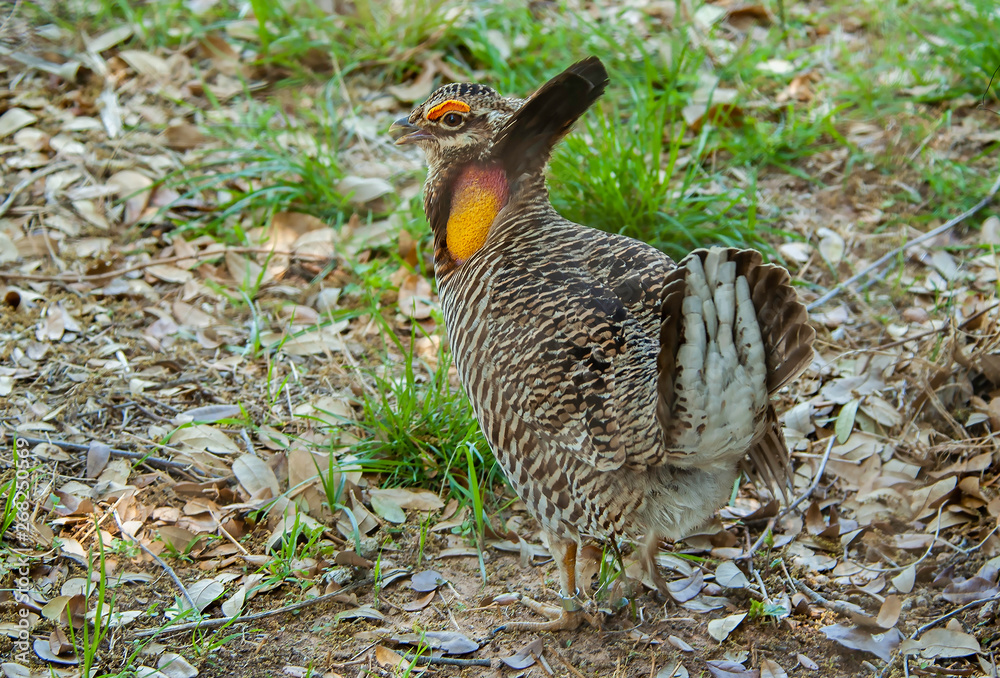
A Little Chicken on the Prairie
By Cheryl Conley, Lake Creek Nature Preserve Board of Directors
They once ranged across coastal Texas and Louisiana and are one of the rarest and strangest species of birds in the country. There were once close to one million of them and now fewer than 200 are left in the wild. They are one of the most endangered birds in the USA. Can you guess what it is? It’s Attwater’s prairie chicken. So what happened? The reasons for their decline are the loss of their habitat, habitat fragmentation, overhunting and imported red fire ants.
Named after British-born naturalist Henry Attwater, the Attwater’s prairie chicken is actually a member of the North American grouse family. In the wild, they require both short and tall grasses. During mating season, males will gather in an area of bare ground or short grasses called “leks.” Here they are very visible to the females. Males inflate their air sacs, raise their tails, droop their wings and stomp their feet while “dancing” around. It is believed that the mating dances were the inspiration for many of the dances performed by the Native American tribes of coastal Texas and Louisisana. Very dense, tall grasses are required for nest-building. Hens will lay between 10 and 14 eggs that will hatch in about 26 days. Because of predators, only 3 in 10 eggs hatch.
Although they’re endangered and there’s only around 200 left in the wild, there is hope. There is a recovery effort in place to ensure that the bird will recover. A team of researchers and wildlife experts from across the country has been assembled to guide the recovery. Here are some of those participating:
- The US Fish and Wildlife Service
- The Nature Conservancy Texas City Prairie Preserve
- Teas Parks and Wildlife
- Texas A&M
- Fossil Rim Wildlife Center – Attwater’s Prairie Chicken
- Houston Zoo
- San Antonio Zoo
- Sea World – San Antonio
Located just 60 miles west of Houston is the Attwater Prairie Chicken National Wildlife Refuge. It is home to one of the largest remaining areas of native coastal prairie in southeast Texas, the habitat required for the survival of the prairie chicken.
The best hope for saving the birds is through captive breeding. The very first chicks hatched through captive breeding took place in 1992 at Fossil Rim Wildlife Center in Glen Rose, Texas. Since them, several more zoos and institutions have joined in the effort. Once the captive birds are old enough to survive on their own, they are fitted with a radio transmitter and taken to specific release sites. They live in pens for about 2 weeks while they adjust and then they are released. The transmitters allow biologists and experts to monitor their movements and survival.
It's always a sad day when an animal goes on the endangered species list but Attwater’s Prairie Chicken just may be one that is able to come off the list someday. Let’s hope!
 |
|
|
Written by: Cheryl Conley
Cheryl currently sits on the Board of Directors for the Lake Creek Greenway Partnership. She is also currently working with a Montgomery County Commissioner on a new nature center/wildlife center. Previously, she was the president of TWRC Wildife Center and Vice President of Friends of Texas Wildlife. Cheryl is a State of Texas permitted wildlife rehabilitator.
|










